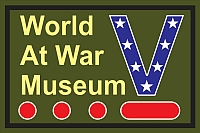|
|
| |
World at War Virtual Museum
Preserving World War II memories through education and living history. |  |
|
|
Victory Gardens |
|
ABC of Victory Gardens
One of the many booklets provided with information on how to create your own vegetable garden. In general, the booklets advises on which vegetables are best to grow, how to recognize and treat pests, fertilizing, and in some cases how to preserve your products for periods when it is just too cold to grow anything.
|
|
| During the war years, the allied governments encouraged their citizens to grow fruit and vegetables for themselves in order to prevent food shortages. Also, by growing food locally, transportation could be utilized for military purposes instead. |
| |
0 Dig for Victory. See more Videos
|
While farmers already knew how to grow their own fruit and vegetables, the city slickers needed some additional support. For that reason, the government provided booklets, publications, and initiatives to inform the general public. Factories, schools, churches, and local governments agents provided areas were citizen could start their own Victory Gardens. Even Eleanor Roosevelt created a garden at the White House.
Several magazines reported on the progress and dedicated articles with additional information on Victory Gardens. Most booklets provided information on how to define the size, how to prepare, when to seed, how to weed, and when to harvest. Most importantly was also identification and treatments of common pests.
Victory Gardens became very popular in 1944 with over 18,000,000 gardens recorded, a number which quickly dwindled after the victory in Europe. In 1945 the interest was almost gone and after 70 years, only the Dowling Community gardens in Minneapolis are the only original garden remaining. This Victory Garden was created in 1943 on filled in marshland near Fort Snelling. |
|
| |
| |
|
|
|
| *** Copyright
(©)
2016-2017 - World At War Museum *** |
|
*** All rights reserved ***
|
| *** Keeping WWII History Alive through your valuable contributions *** |
|